The Six-Petal Rosette
The six-petal rosette (also known as a hexafoil), the flower-like symbol created by overlapping seven circles, as well as the expanded variants with 7 interlocking rosettes and 19 interlocking rosettes (the latter is called the “Flower of Life” in the New Age movement), is an ancient symbol that has been used across cultures and religions for millennia.
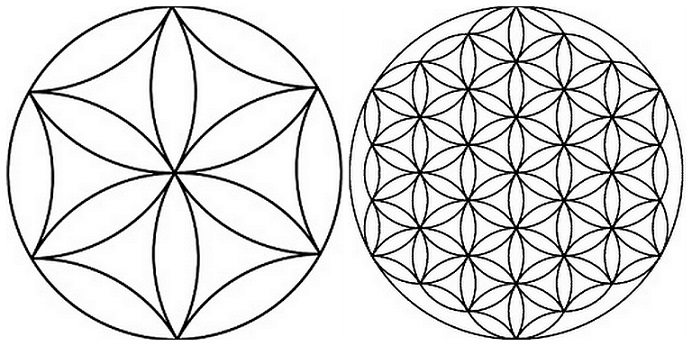
The rosette is a solar symbol in many cultures and many peoples believed it to be magical. It was commonly used as a decorative motif to adorn doors, ceiling beams, crosses, cornices, coats of arms, everyday objects, furniture, musical instruments, ritual items, graves.
In ancient Slavic tradition, the rosette was associated with the chief pagan god Perun, the god of thunder and lightning, and was supposed to protect against lightning and generally ensure the favor of the Thunderer. Appropriately, the symbol is also called the “symbol of Perun” and a “thunder mark” in Ukrainian.
The Rosette on Crossbeams
Supporting a ceiling with large wooden crossbeams (“svolok” in Ukrainian and “sosręb” in Polish) was once a common construction practice, found in noble residences as well as in burgher homes, and through the early twentieth century in regional construction, especially in the Carpathians.
The crossbeam was not only an important structural element of the home, but also a symbolic and decorative one: it was in the center of this beam that the rosette was engraved to protect the house against misfortune and especially against fire. Additionally, the date of construction, decorative motifs, the name of the owner, the name of the carpenter, mottos, or religious symbols could be engraved on the beam, turning the crossbeam into a vital record of the house.

Detailed information about the use of crossbeams and the rosette in the architecture of the peoples of Galicia can be found in excellent works of research from the end of the nineteenth and beginning of the twentieth centuries by Władysław Matlakowski and Kazimierz Mokłowski. Władysław Matlakowski, a surgeon, ethnographer, and researcher of Podhale architecture and folk art, published Budownictwo ludowe na podhalu (Folk Buildings in Podhale) in 1892 and Zdobienie i sprzęt ludu polskiego na Podhalu (Decoration and Domestic Utensils of the Polish People in Podhale) in 1901, while Kazimierz Mokłowski, a Polish architect and art historian, who later lived and worked in Lviv, published Sztuka Ludowa w Polsce (Folk Art in Poland) in 1903. These three works include thorough descriptions as well as plenty of illustrations of various elements of the architecture and applied art of the region.
Crossbeams in the Folk Architecture of Galician Highlanders
Though historically used across much of Ukraine and Poland, today the rosette is most associated with and best preserved in the culture of the Carpathian highlanders of Galicia, in particular in Hutsul, Boyko, Lemko, and Goral folk architecture, woodwork, and household objects. Accordingly, in Ukrainian it also has such names as “hutsulska rozetka” (Hutsul rosette), “boykivska rozetka” (Boyko rosette) and in Polish “rozeta karpacka” (Carpathian rosette), “rozeta podhalańska” (Podhale rosette), “rozeta góralska” (Goral rosette).
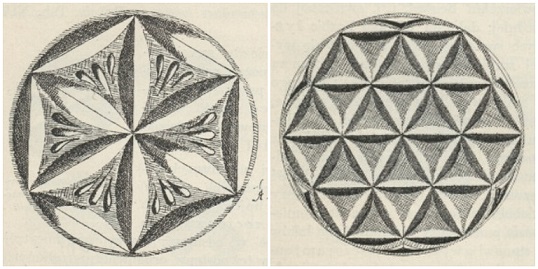
Goral Cottages
Podhale is a region in the Polish Tatra Mountains inhabited by highlanders known as Gorals. Władysław Matlakowski writes in his book Zdobienie i sprzęt ludu polskiego na Podhalu that the “gwiazda” (meaning “star”—another name for the rosette in Polish) is “the most common and the most characteristic ornament in Podhale: it is found everywhere, but mostly on every crossbeam.” Indeed, throughout this book as well as his other book Budownictwo Ludowe na Podhalu, the gwiazda appears in illustrations of such items as spoon racks, chairs, distaffs, and lintels, but most notably on crossbeams.
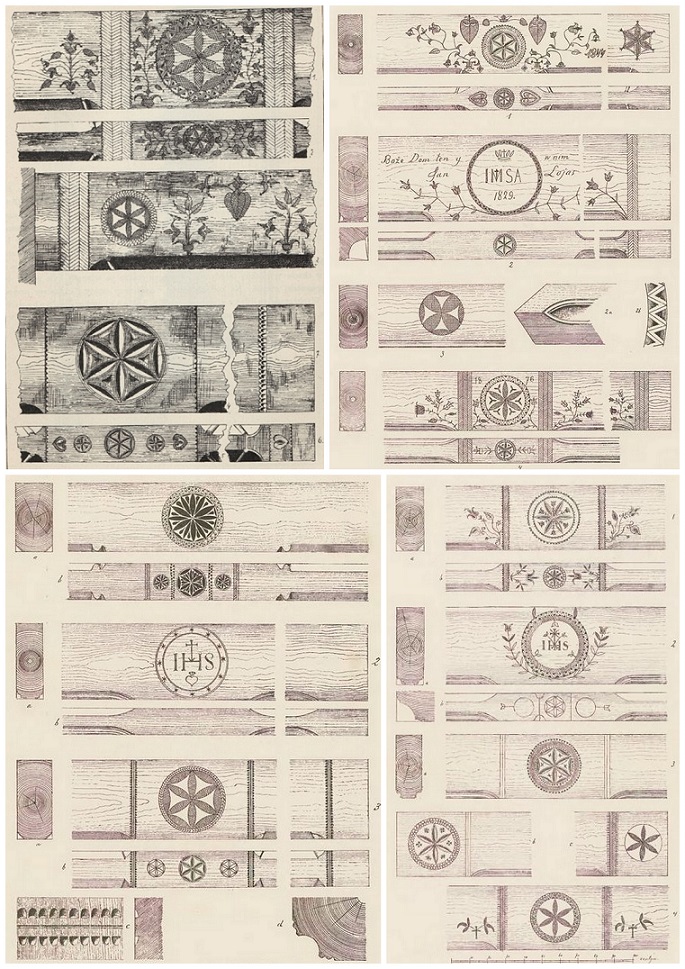
Examples of old crossbeams with rosettes from the Podhale region can still be found in Poland, especially in open air museums which have preserved the local folk architecture.
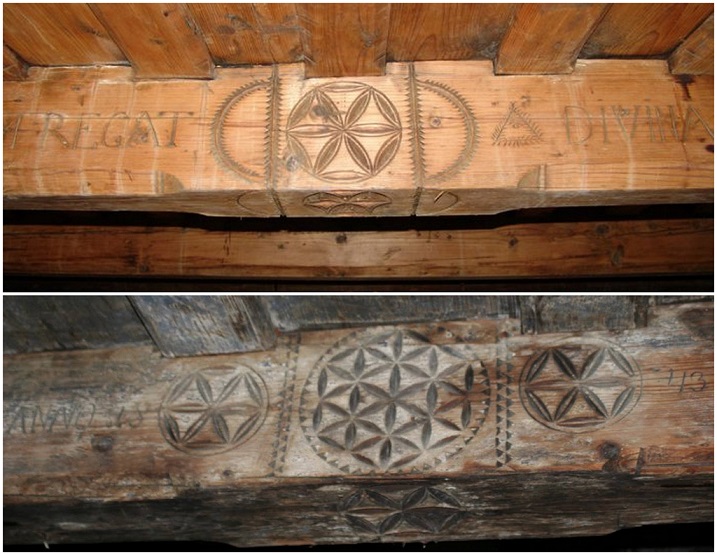
Hutsul, Boyko & Lemko Cottages
The Hutsuls, Boykos and Lemkos inhabit what is today the Ukrainian and eastern Polish Carpathian Mountains. Just as among the Gorals, the rosette is found in the architecture and folk crafts of these highlanders.

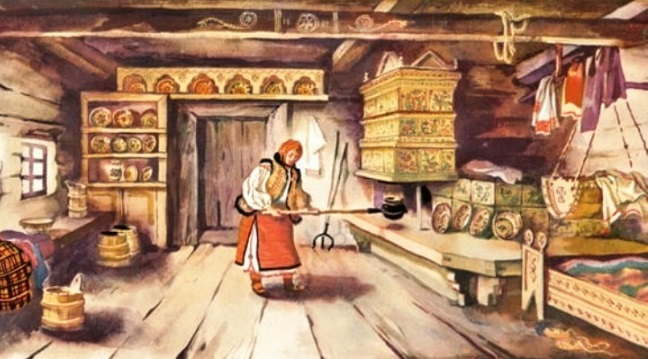
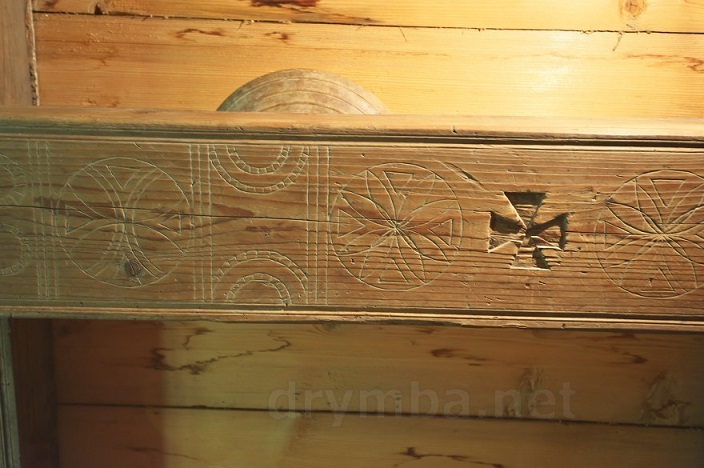
A very old example dating from 1681 of a rosette on a crossbeam can be found in a Lemko cottage in the Rural Architecture Museum of Sanok (Poland).
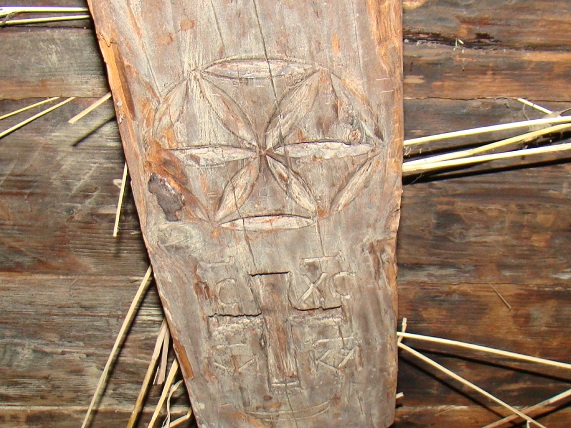
A testament to the ubiquity of the rosette in the folk architecture of the Carpathian highlanders is Lviv’s Museum of Folk Architecture and Rural Life, which features examples of the architecture of the Hutsuls, Boykos, and Lemkos. The rosette can be seen all over the open air museum, including on several crossbeams inside the homes. It is no wonder the museum uses the rosette as its logo.

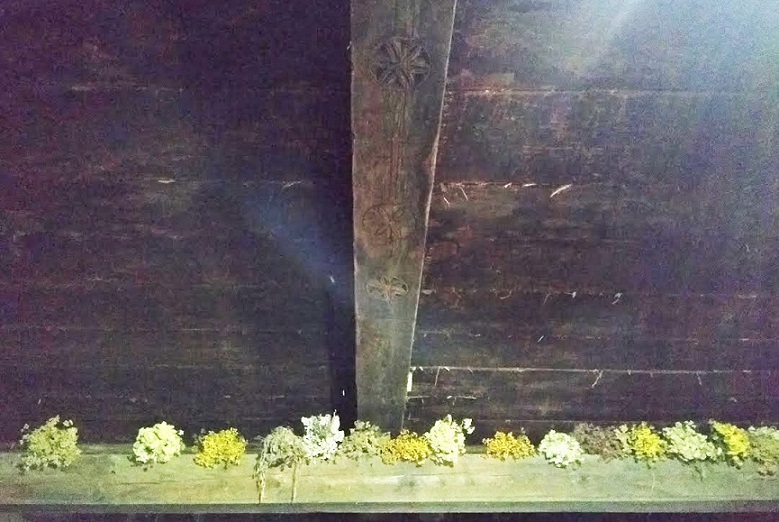
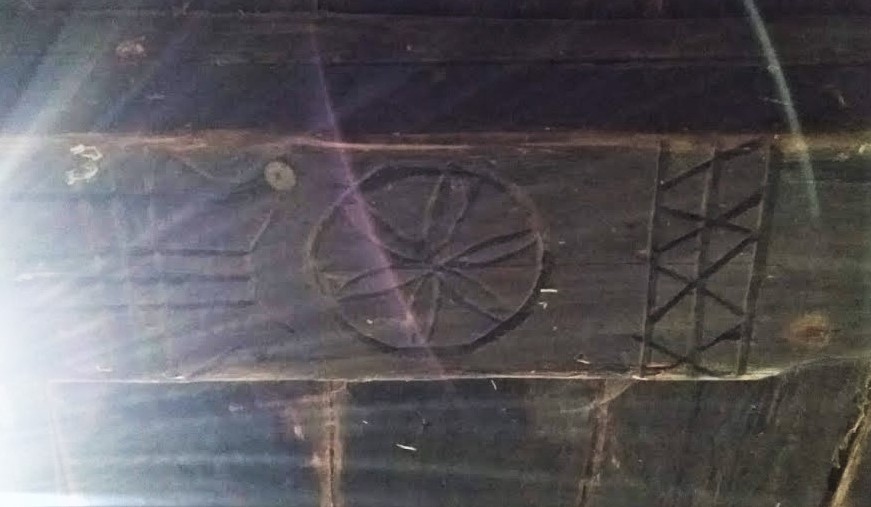
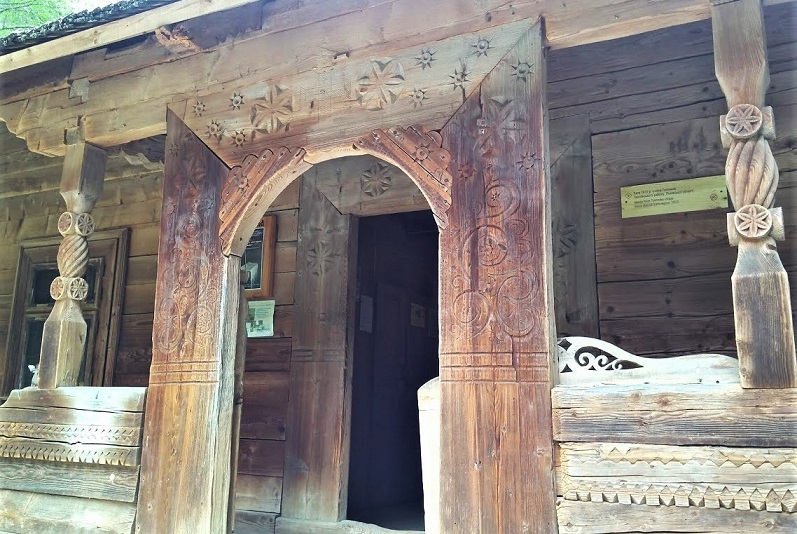
Crossbeams in Renaissance Buildings in Lviv
In addition to examples from the Carpathian Mountains, Kazimierz Mokłowski’s book Sztuka Ludowa w Polsce includes illustrations of crossbeams from buildings in Lviv which include the rosette, as well as other solar symbols, often along with the year of construction and religious symbols.
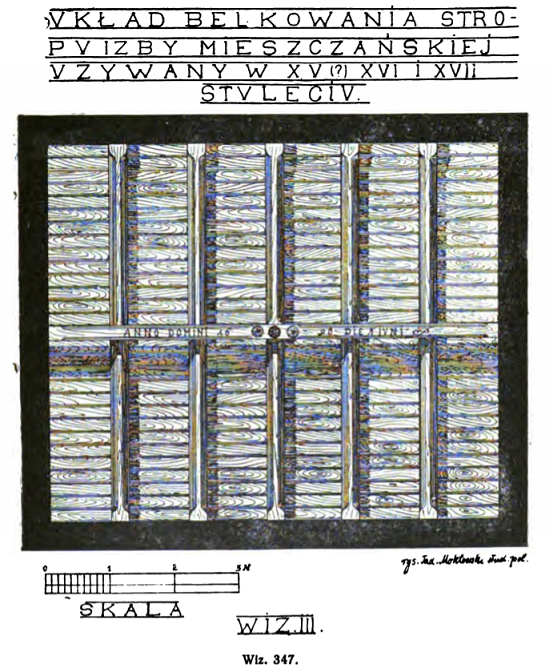

Fortunately, not only do these original engraved Renaissance-era crossbeams, as documented by Kazimierz Mokłowski, still support the ceilings of the buildings in Lviv’s historic center, but many of them are open to public viewing as they are generally located in shops, restaurants, and museums.
Some of the best places to see them are:
Open Store Lviv, 8 Fedorova St. across from the Dominican Church
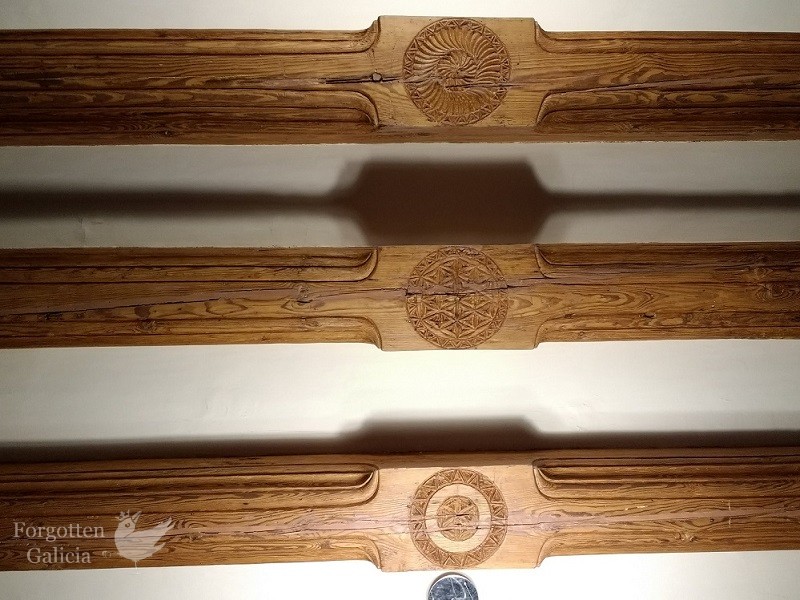
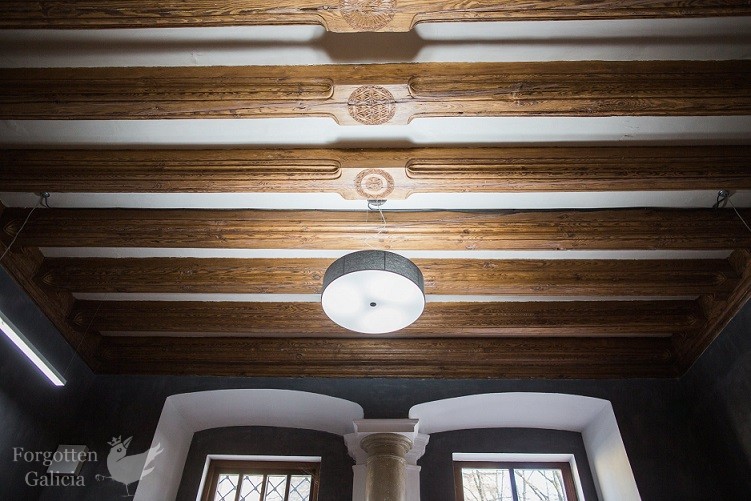
2 Fedorova St., corner of Virmenska St.
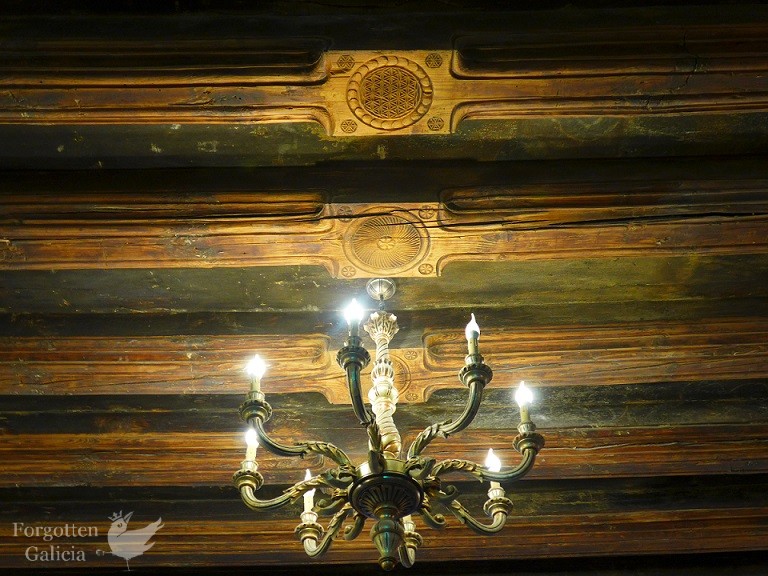
Folk clothing and souvenir shop at 37 Ploshcha Rynok
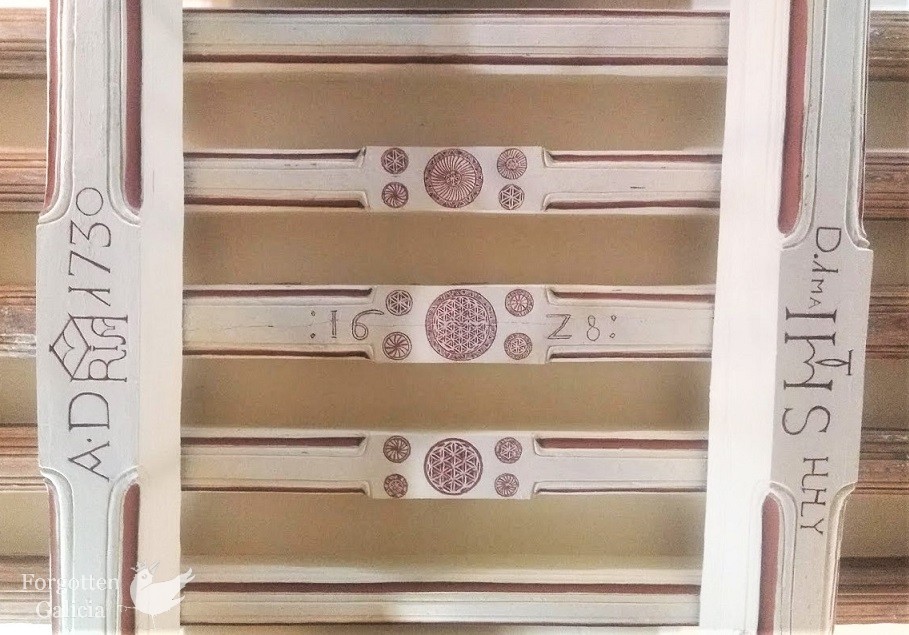
Bandinelli Palace at 2 Rynok Square (built in 1589)

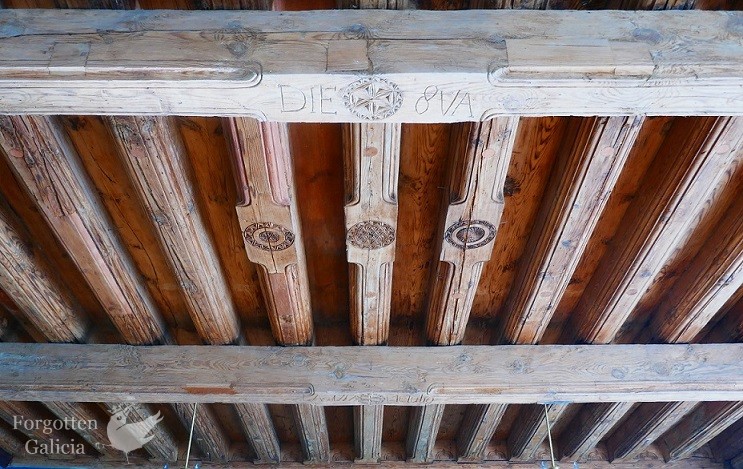
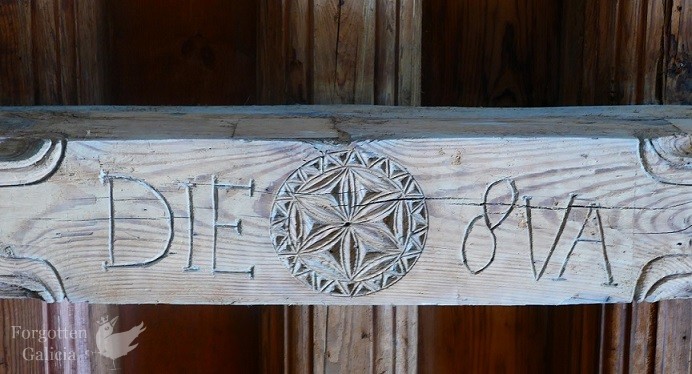
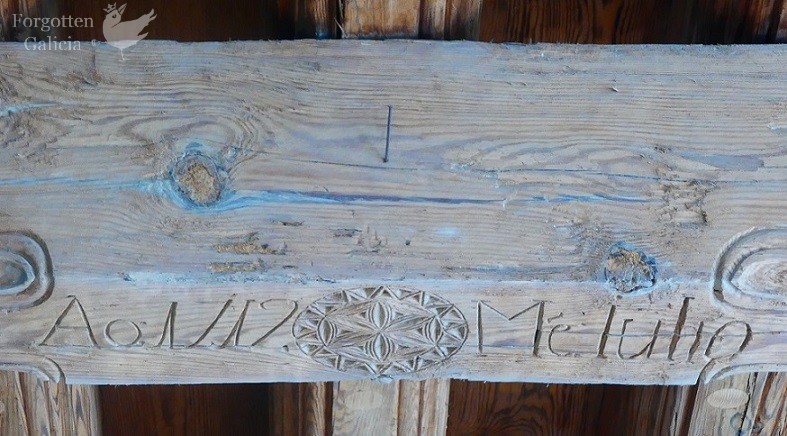
Crossbeams in Zakopane Style Villas
A widespread symbol among the Gorals, the rosette was a popular symbol in the architecture and interior decor of Zakopane Style villas. Zakopane Style architecture emerged at the end of the nineteenth century when architect Stanislaw Witkiewicz, rejecting foreign building styles that had started to appear in the booming ski resort of Zakopane, chose to embrace traditional Podhale-style architecture, enriching it with elements of Art Nouveau. The new Zakopane Style villas included large intricately engraved crossbeams prominently featuring the rosette, such as can be found in Villa Oksza (built in 1894 by Witkiewicz, today an art gallery) and in the guest house Villa Orla (built 1901). Though by this time the symbol likely lost its meaning as a “thunder mark” and was used purely as a decorative element cherishing the local culture.
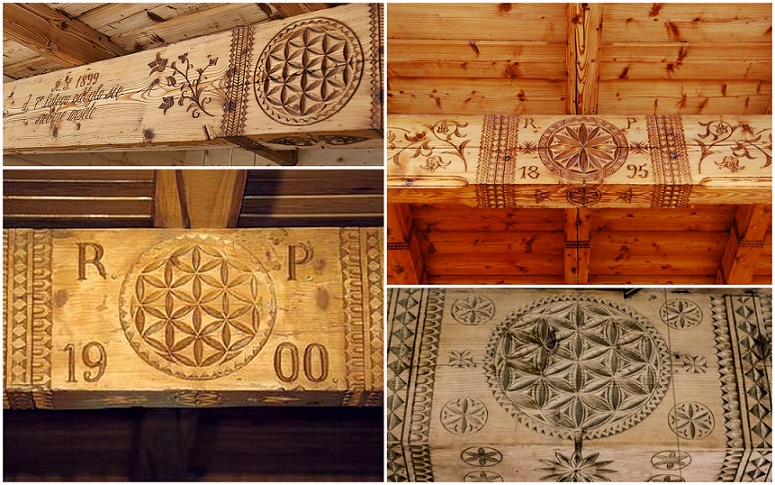
A Sign from the Past
Although the rosette was engraved and painted on myriad objects, its place on the crossbeam was especially significant for the people of Galicia as it served as a protection symbol for the home. And while found across the region, the symbol was longest used in the architecture and applied art of the Carpathians. Its prevalence in the highlander culture was studied by fin de siècle historians and architects who then used it as a motif in the folk-inspired architectural movements that emerged at the time. In Zakopane, the rosette continued to appear, among other places, on large wooden crossbeams inside Zakopane Style villas. In urban centers, using modern construction practices which no longer used crossbeams, the architects incorporated the rosette into other parts of Zakopane Style or Hutsul Secession buildings. No longer used to protect the home from lightning strikes and to ensure good fortune, the symbol’s usage preserved an important element of the local culture that was beginning to decline.
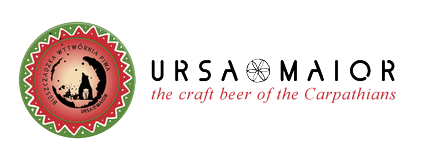
Today, the rosette has found new places to thrive across Galicia—for example, it is used as logos for museums and a microbrewery, and found on folk-inspired accessories. Although its history, meaning, and usage may have been forgotten, the “Carpathian” rosette is in fact still alive and well today.
So don’t forget—next time you enter a Carpathian highlander’s cottage, a Renaissance building in Lviv, or a Zakopane Style villa, look up! If you are lucky, you will find an authentic example of this ancient and mystic symbol.
Written by Areta Kovalska
Sources:
Six Petal Rosette
Traditional Design of the Lublin Region – Popular Motifs
Władysław Matlakowski, Budownictwo ludowe na podhalu, 1892
Władysław Matlakowski, Zdobienie i sprzęt ludu polskiego na Podhalu, 1901
Kazimierz Mokłowski, Sztuka Ludowa w Polsce, 1903

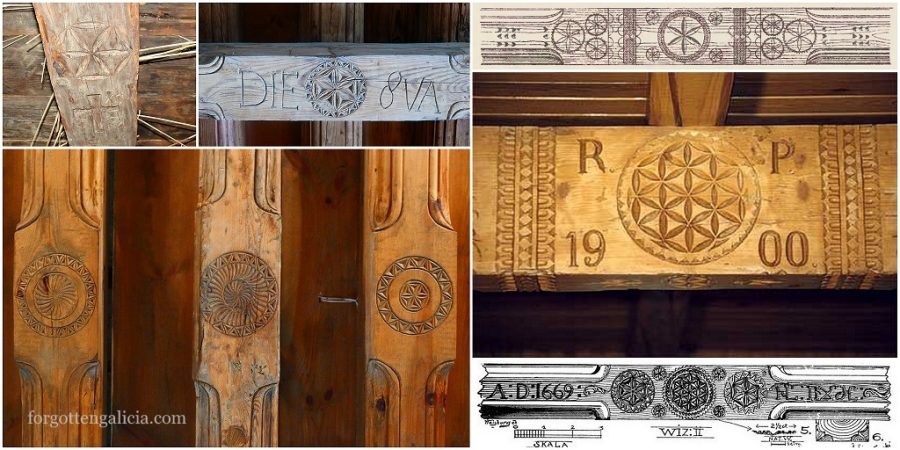




Thank you for this! My great-grandfather was from bukovina (tartranska) so I appreciate learning about things from that region.
Glad to hear!
I would love to have an engraved crossbeam above my kitchen stove and above my fireplace. Can you suggest if there are carvers or shops that still make pieces and any contact details.
My grandfather was Paul Potosky, passed in 1971 at 84. Family story goes that he and his brother Steven were up “in the mountains”, fighting with the partisans, and I am figuring, against the bolsheviks. Upon returning home, they found their whole family murdered and fled across Poland and caught a boat to USA. He fought under some general who had him change the I to a Y to signify his service. I don’t know how accurate this all is. He married Mary Dziadik, born in Galicia, it was an arranged marriage. They had 9 children, my father being the youngest. As I child, I recall the oldest, a daughter, stating that “Pa was told to never forget he was born with a silver spoon in his mouth”. He worked hard, never took charity and all the children survived to adulthood. They are all gone now. I myself am 68. This note is kind of like a bottle in the ocean. I looked up Lancut and then found my way here. Anyone know any more history on this?
It seems like your father’s people are Lemko from Nowica, now Poland, previously Galicia. Someone has completed a fairly thorough family tree.
https://www.google.com/maps/place/38-315+Nowica,+Poland/@49.5488244,21.1887929,12.71z/data=!4m5!3m4!1s0x473dcfe09d91a161:0xa5205fa489e93248!8m2!3d49.5512964!4d21.1867593
https://www.ancestry.com/family-tree/person/tree/83612103/person/36490998300/facts?_phsrc=ypW1716&_phstart=successSource
http://www.carpatho-rusyn.org/new/214.htm
Thank you for this post! My family’s roots are in the Carpathian Mountains near the Podhale area. I am amazed to see this symbol was used so far back! Somehow it managed (without my full awareness) to sneak into my artwork. It’s really great to know my ancestors used this symbol too.
[…] He explained that the design is ancient, used by Sumerian and Egyptian cultures, quilt-making grandmothers, and is commonly referred to as a “six-petal rosette.” […]
Thank you for this article! It lead me to Matlakowski’s writings and drawings. I loved some of the designs I found there and I use them in some of my pyrography work.
Thank you!
This was a great article! I spent time in L’viv in 2008. I saw the rosettes carved on examples of Ukrainian lira in ethnographic museums (this was before the recent renaissance of the lira in Ukraine – back then it was hard to find any that were not very old and in museums – now they are fairly common). I wondered about the symbolic meaning of those rosettes. Thanks for shedding some light!